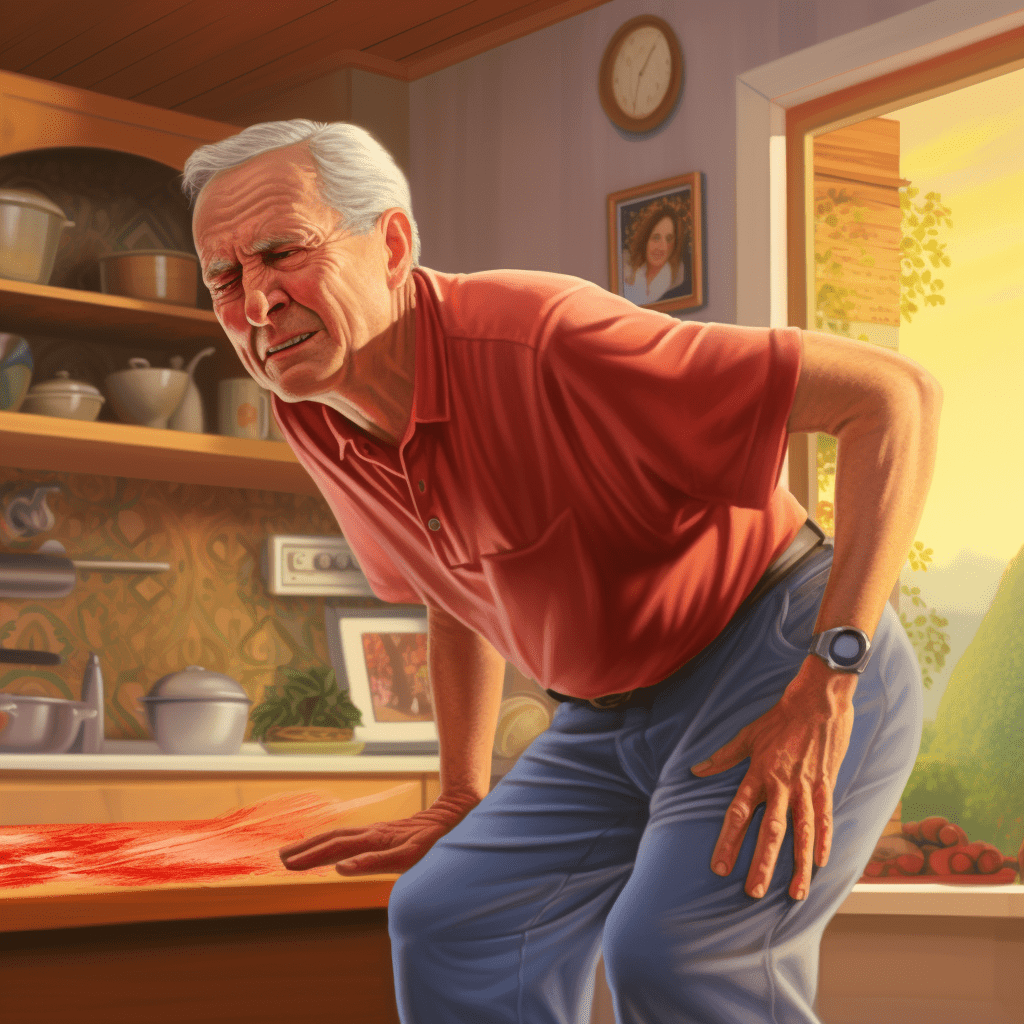For the estimated 2.2 billion people worldwide living with visual impairments, home safety is a top priority. Living with vision loss can present a multitude of challenges, from navigating unfamiliar spaces to identifying potential hazards. Ensuring that the home environment is safe and accessible is crucial to maintaining independence and reducing the risk of accidents.

While many safety measures are universal, those with visual impairments require additional considerations and adaptations to ensure their safety. In this article, we will discuss the importance of home safety for those with visual impairments and highlight some key strategies and tools that can be used to create a safe and welcoming home environment. Whether you or a loved one is living with visual impairments, taking proactive steps to promote home safety can make all the difference in maintaining a high quality of life.
Understanding visual impairments and their impact on home safety
Visual impairment is a term used to describe a wide range of vision loss. It can be caused by a variety of factors, including disease, injury, and age-related degeneration. For those with visual impairments, the ability to visually identify potential hazards in the home can be compromised. This can include hazards such as loose rugs, cluttered walkways, or poorly lit areas. Additionally, navigating unfamiliar spaces can be challenging, leading to increased risk of accidents and falls.
The impact of visual impairment on home safety can be significant, but with proper accommodations and adaptations, many of these challenges can be overcome. One important consideration is the use of assistive technology to enhance safety and accessibility in the home. Another important factor is creating an environment that is designed with the needs of those with visual impairments in mind. By understanding the unique challenges faced by those with visual impairments, we can create a safer and more welcoming home environment.
Common hazards for visually impaired individuals in the home
For those with visual impairments, the home can present a variety of hazards that may not be immediately apparent to those with full vision. Some common hazards include:
- Tripping hazards such as loose rugs or cluttered walkways
- Poorly lit areas that can make it difficult to navigate safely
- High shelves or cabinets that may be difficult to reach or identify
- Stairs or steps that may be difficult to navigate without proper lighting and handrails
- Electrical cords or other obstacles that may be hazardous if not properly secured
These hazards can be particularly dangerous for those with visual impairments, as they may not be able to easily identify potential dangers. Additionally, navigating the home may be more challenging, increasing the risk of accidents and falls. By identifying and addressing these hazards, we can create a safer and more accessible home environment for those with visual impairments.
Assistive technology for home safety
Assistive technology can play a critical role in promoting home safety for those with visual impairments. There are a variety of tools and devices that can be used to enhance safety and accessibility in the home, including:
- Voice-activated assistants such as Amazon Echo or Google Home that can be used to control lighting, temperature, and other devices
- Smart home devices such as motion-activated lights or door sensors that can enhance safety and security
- Talking watches or clocks that can be used to keep track of time without relying on visual cues
- Audio books or text-to-speech software that can be used to access written materials
- Braille or tactile markings on appliances or other items to make them easier to identify
These tools and devices can be invaluable in promoting independence and enhancing safety for those with visual impairments. By leveraging the latest in assistive technology, we can create a home environment that is safe, accessible, and welcoming.
Creating a safe and accessible home environment
In addition to assistive technology, there are a variety of strategies that can be used to create a safe and accessible home environment for those with visual impairments. Some key considerations include:
- Proper lighting: Ensuring that the home is well-lit can help to reduce the risk of accidents and falls. This may include adding additional lighting in key areas or using motion-activated lights to improve visibility.
- Clear pathways: Keeping walkways and other areas clear of clutter can help to reduce the risk of tripping hazards. This may include removing loose rugs or other obstacles that may be hazardous.
- Tactile markings: Adding tactile markings to appliances or other items can help to make them easier to identify for those with visual impairments. This may include adding braille labels or other tactile markers.
- Handrails: Installing handrails in key areas such as stairways or bathrooms can help to enhance safety and accessibility.
- Grab Bars: Installing grab bars in bathing areas will create a high level of safety and independence in the shower or bath.
- Non-slip surfaces: Using non-slip surfaces in areas such as bathrooms and kitchens can help to reduce the risk of accidents and falls.
By taking these steps to create a safe and accessible home environment, those with visual impairments can maintain a high level of independence and reduce the risk of accidents and injuries.
Tips for navigating the home with visual impairments
Navigating the home can be challenging for those with visual impairments, but there are a variety of strategies that can be used to enhance safety and accessibility. Some tips for navigating the home with visual impairments include:
- Use of a white cane or other mobility device to help navigate unfamiliar spaces
- Keeping a consistent layout in the home to aid in navigation
- Using contrasting colors to help identify key areas or objects
- Installing handrails in key areas to assist with navigation
- Using audio cues or other non-visual cues to help with navigation
By incorporating these strategies into the home environment, those with visual impairments can navigate with greater ease and safety.
Importance of emergency preparedness for visually impaired individuals
Emergency preparedness is a critical consideration for all individuals, but it is particularly important for those with visual impairments. In the event of an emergency such as a fire or natural disaster, those with visual impairments may face additional challenges in navigating the home and accessing important resources. Some key considerations for emergency preparedness for those with visual impairments include:
- Having a plan in place for evacuation in the event of an emergency
- Keeping a list of emergency contacts and important medical information on hand
- Ensuring that emergency supplies such as flashlights and extra batteries are readily accessible
- Having a backup plan for communication in the event of a power outage or other disruption
- Regularly practicing emergency drills to ensure preparedness
By taking these steps, those with visual impairments can be better prepared to respond in the event of an emergency.
Resources for enhancing home safety for the visually impaired
There are a variety of resources available to help enhance home safety for those with visual impairments. Some helpful resources include:
- Local organizations for the blind or visually impaired that may offer assistance or advice on home safety
- Assistive technology providers that can provide tools and devices to enhance safety and accessibility
- Government resources such as the Americans with Disabilities Act (ADA) that provide guidance on accessibility and safety standards
- Online resources such as blogs and forums that provide advice and support for those with visual impairments
By leveraging these resources, those with visual impairments can access the support and guidance they need to create a safe and welcoming home environment.
Advocating for home safety rights for the visually impaired
Ensuring that those with visual impairments have the same rights and access to safety as those without is an important consideration. This may include advocating for policies and legislation that promote accessibility and safety in the home environment. Additionally, raising awareness of the unique challenges faced by those with visual impairments can help to promote greater understanding and support for this community.
Personal stories of home safety challenges and triumphs
Finally, it is important to recognize the personal stories of those with visual impairments and their experiences with home safety. By sharing these stories, we can gain a greater understanding of the challenges faced by this community and the strategies and adaptations that have been successful in promoting safety and accessibility in the home environment.
Conclusion and call to action for improving home safety for those with visual impairments
In conclusion, home safety is a critical consideration for those with visual impairments. By understanding the unique challenges faced by this community and taking proactive steps to promote safety and accessibility, we can create a home environment that is safe, welcoming, and empowering. Whether through the use of assistive technology, adaptations to the physical environment, or advocacy for greater accessibility and safety standards, we can make a difference in the lives of those with visual impairments. Let us all work together to ensure that everyone, regardless of their vision status, has access to a safe and welcoming home environment.














Leave a comment (all fields required)